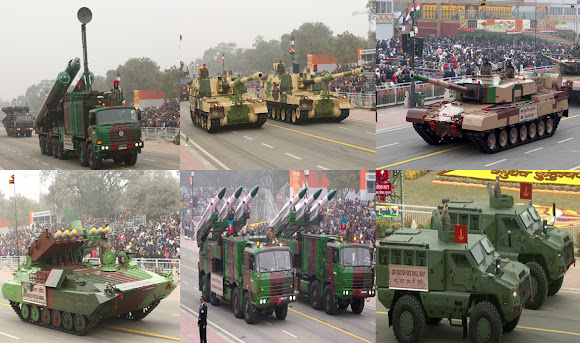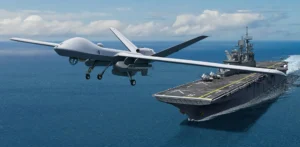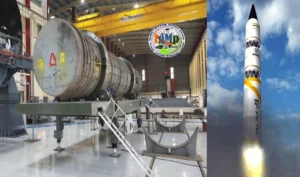 |
| All indigenous weapons either designed, developed or manufactured in India has been showcased in this year’s Republic Day Parade on Kartavya Path |
Highlights
- India is the world’s second-largest arms importer but lately it is trying to develop indigenous defence equipment
- India’s legacy platforms will continue in service for the next few decades
- Over 60 per cent of its hardware is of Russian origin with the rest sourced from a mix of Israeli, French and American suppliers
Republic Day parades down Kartavyapath are the best place to view India’s menagerie of defence hardware. India is the world’s second-largest arms importer and this is visible in its procurement over the years—Russian tanks, American helicopters and French fighter jets. As the title of a 2012 book by Stephen P Cohen and Sunil Dasgupta put it, India was “Arming Without Aiming”.
Things have begun changing now. In a first for the Republic Day parade, India will showcase only indigenous defence equipment. Rolling down Kartavyapath will be the indigeneous Arjun Tank, Nag anti-tank guided missiles, Brahmos missiles and K-9 Vajra howitzers. India, it can be said, is arming and aiming.
India’s legacy platforms will continue in service for the next few decades — over 60 per cent of its hardware is of Russian origin with the rest sourced from a mix of Israeli, French and American suppliers. In the meantime, the government plans to ensure that all future defence platforms are exclusively made within the country. The first milestone has been set as the year 2025. By this time, the government has targeted for Indian industry to produce arms worth Rs 1.75 lakh crore and export arms worth Rs 35,000 crores.
“We set ourselves this target in 2018. Defence exports were only worth Rs 2,500 crore then. So, 35000 crore looked huge and industry was also not that big. Today, we are well in way of achieving that. Our industry size is over 1 lakh crore. Our defence exports in 2022-23 are likely to be Rs 16-17000 crore,” says former Defence Secretary Dr Ajay Kumar.
In the past, India was almost fully dependent on foreign countries for hardware. This later became manufacturing on licenced transfer of technology where there were restrictions on the quantity of production, export, on any further upgrade in the system. The government has steadily been increasing budgetary support for indigenous industry to achieve this goal of creating an indigeneous defence ecosystem.
“In 2021, we first time decided that we will earmark certain percentage of our budget allocation for domestic items that will be bought from India,” says Dr Kumar. The per centage increased from 58 in 2020-21 to 64 per cent in 2021-22 and to 68 per in 2022-23. “In the last two years, there have been hardly any defence equipments that we have bought from abroad. ” says Dr Kumar.
Defence exports are key to this military-industrial complex.
“We are exporting platforms, subsystems, components, depending on the needs of a country. Major defence export goes to US. Its largely in terms of systems and sub systems for global OEMs. We have also today become a big exporter of explosives both in public and private sector. We are also exporting platforms to friendly countries. A whole range of products are getting exported, from bullet proof jackets, helmets, drones, missiles to tanks. We are seeing a lot of interest in services like repair and maintenance. In fact, we are doing lot of systems,” says Dr Kumar.
Private players are playing a big role. Defence corridors are being developed in Uttar Pradesh and Tamil Nadu to facilitate private companies. When these corridors are fully functional and developed, companies will find a supply chain within the corridor and required components could be found within the corridor. The nodes in these corridors will become clusters. A whole ecosystem is being generated.
“The basic reason why this came up is to energise MSMEs to set up their industry in this corridor. There is an infrastructural support being given . Then subsidies depending upon the level of investment. So it’s a very enabling system for MSMEs and start-ups,” says Air Chief Marshal, Rakesh Kumar Bhadauria (Retd), Chief Nodal Officer, UP Defence Industrial Corridor.
To encourage and promote indigenously made defence equipment the government has come with Positive Indigenisation lists banning import of certain items.
“Having identified what can be made in India starting from 2019 till date, total number of products which now are going to be India based are around 400. Four lists have been released, which means domestic manufacturers have four times the opportunity they had in 2019,” says Lt Gen Vinod Khandare (Retd.), Principal Advisor, Ministry of Defense.
Indigenous defence capability empowers our defence forces in adverse times and also empowers our position globally. “No country can have an independent foreign policy if it is dependent upon others for its defence. You can’t have even an independent foreign policy if you are worried that the defence supply chain for some reasons is interrupted,” says Kanwal Sibal, former foreign secretary.
The bigger aim, as Lt General Khandare says, is for India to be looked upon as a reliable, trustworthy, benign and productive partner. “We have already lobbied for permanent membership of the UNSC. It hasn’t come to a head yet, but at some stage it will come.”








